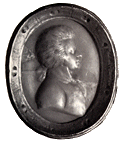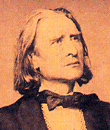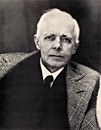|

|
|

J.S. Bach - Concerto for Two Pianos and Strings in C Minor,
BWV. 1060
- Concerto for Two Pianos and Strings in C Major,
BWV. 1061
Bela Bartók
- Concerto for Two Pianos, Percussion and Orchestra
|
| The
twin brothers, Richard and John Contiguglia, gave us an
interpretation (Bartók’s Concerto for Two Pianos, Percussion and
Orchestra) that commanded mesmerized listening by its amazing rhythmic
subtlety, dynamic depth and keen expression. All the elements of
this fascinating work came out perfectly: i.e. the ‘white-knuckled’
tension of this complex score, characterized above all by the
gouging, hammering rhythmic structure. -Eindhovens Dagblad, Holland |
|
Brilliant
Bartók with Noordelijk Filharmonisch Orkest
The Concerto, of course, largely because of the piano-duo, Richard
and John Contiguglia, was a breath-taking event. -Nieuwsblad van het Noorden, Groningen, Holland |
|
|
Max Bruch - Concerto for Two Pianos and Orchestra
|
| Identical
twins, Richard and John Contiguglia, emphasized the lyricism in Max
Bruch’s expertly crafted, bountifully melodic Concerto for Two
Pianos. -The New York Post |
|
Percy Grainger/
Tom Kochan
- Concerto on
George Gershwin's 'Porgy and Bess'
|
Percy Grainger -
|
Handel in the Strand for Two Pianos and Strings |
|
- |
Tribute to Foster for 5 Single Voices,
Mixed Chorus, |
|
Musical Glasses and Two Pianos |
|
Pianists
Score with Concerto on ‘Porgy and Bess’ Themes
If conductors and managers are alert, the Contiguglias could
easily spend the rest of their lives playing the new concerto,
relieving audiences of endless performances of Gershwin’s greatest
hit, Rhapsody in Blue. The Contiguglias play the great
Gershwin tunes with seductive phrasing and exuberant all-American
vitality. -Byron Belt, Newhouse News Service |
|
| Mozart - |
Concerto in F Major for Two Pianos and Orchestra, KV. 242 |
|
|
(Transcription of Triple Concerto by Mozart) |
|
- |
Concerto in E-Flat Major for Two Pianos and Orchestra, KV. 365 |
|
| Richard
and John Contiguglia treated the elegant Mozart Double
Concerto with identical mastery – vibrant, songful and crystalline
playing. -Milwaukee Sentinel |
|
| For
the music lovers in the hall there was something privileged about
being able to leave the concert with the highest attainable musical
happiness on earth. (Mozart – Concerto for Two Pianos and Orchestra,
K.365) -Het Vaterland, The Hague |
|
|
Carl Orff
- Carmina Burana for Two Pianos, Percussion, Soloists and Chorus
|
| The
featured soloists, Richard and John Contiguglia, made an indelible
impression with their duo-piano artistry in Poulenc’s infectiously
playful Concerto. -Denver Post |
Poulenc - Concerto in D Minor
Saint-Saens
- Carnival of the Animals
|
|



The Contiguglias perform a vast repertoire of music for two pianos and
for one piano, four-hands, extending from the Baroque to the modern, repertoire that
includes examples of almost
 every important composer from Bach to Bolcom. In
addition to
duo works of Bach, Mozart, Schubert, Brahms, Schumann, Debussy, Saint-Saens,
Fauré,
Hindemith, Bartók, Milhaud, Poulenc, Rachmaninoff, Ravel, Gershwin, they play many
musical rarities of Percy Grainger and Franz Liszt and newer works by contemporaries such as
John Corigliano and William Bolcom. every important composer from Bach to Bolcom. In
addition to
duo works of Bach, Mozart, Schubert, Brahms, Schumann, Debussy, Saint-Saens,
Fauré,
Hindemith, Bartók, Milhaud, Poulenc, Rachmaninoff, Ravel, Gershwin, they play many
musical rarities of Percy Grainger and Franz Liszt and newer works by contemporaries such as
John Corigliano and William Bolcom.
 Composers' names give but a partial story. Among
Mozart's 6 Sonatas, 2
Fantasies and Variations for two pianists, all of which the Contiguglias play, are
his Sonata in F Major, KV. 497, for Piano Duet, which Tovey considered one of the
composer's
most perfect works, and the Sonata in D Major, KV. 448, for Two Pianos, which Alfred
Einstein called "one of the most profound and most mature of all Mozart's compositions." Composers' names give but a partial story. Among
Mozart's 6 Sonatas, 2
Fantasies and Variations for two pianists, all of which the Contiguglias play, are
his Sonata in F Major, KV. 497, for Piano Duet, which Tovey considered one of the
composer's
most perfect works, and the Sonata in D Major, KV. 448, for Two Pianos, which Alfred
Einstein called "one of the most profound and most mature of all Mozart's compositions." |
 Schubert's 70 or so piano duets are a speciality of the Contiguglias.
They comprise some of the composers finest and most important works: his longest piano
sonata, The Grand Duo, his greatest set of variations, Variations in A-Flat on
an Original Theme, his most formally innovative work, and one of his most tragic,
Fantasy in F Minor, his third longest essay in sonata form, Allegro
(Lebensstürme), and his most important
work in the Hungarian style, Divertissement ŕ la Hongroise. Music
historian Joseph Horowitz
wrote, "Schubert's most original contribution as a keyboard composer may be
his prodigious catalogue of piano duets - arguably, the most comprehensively varied
body of music ever created by a single composer in a single genre." Schubert's 70 or so piano duets are a speciality of the Contiguglias.
They comprise some of the composers finest and most important works: his longest piano
sonata, The Grand Duo, his greatest set of variations, Variations in A-Flat on
an Original Theme, his most formally innovative work, and one of his most tragic,
Fantasy in F Minor, his third longest essay in sonata form, Allegro
(Lebensstürme), and his most important
work in the Hungarian style, Divertissement ŕ la Hongroise. Music
historian Joseph Horowitz
wrote, "Schubert's most original contribution as a keyboard composer may be
his prodigious catalogue of piano duets - arguably, the most comprehensively varied
body of music ever created by a single composer in a single genre." |
| The
Contiguglia twins here sound like Ashkenazy multiplied by two,
and this is the most amazing record of two-piano music that I
can remember. (Liszt – Operatic Fantasies) -Gramophone, London |
 Included in the Contiguglias' repertoire of
Liszt's duos are his
monumental transcription for two pianos of Beethoven's 9th
Symphony, many Symphonic Poems,
among them Les Préludes, Orpheus and Mazeppa, 3 Operatic Fantasies,
Grand Galop Chromatique, Tscherkessenmarsch from 'Ruslan und Ludmila',
Beethoven Fest-Cantate,
Weihnachtsbaum,
several Hungarian Rhapsodies and Grosses Konzertstück über Mendelssohns 'Lieder ohne
Worte'. Included in the Contiguglias' repertoire of
Liszt's duos are his
monumental transcription for two pianos of Beethoven's 9th
Symphony, many Symphonic Poems,
among them Les Préludes, Orpheus and Mazeppa, 3 Operatic Fantasies,
Grand Galop Chromatique, Tscherkessenmarsch from 'Ruslan und Ludmila',
Beethoven Fest-Cantate,
Weihnachtsbaum,
several Hungarian Rhapsodies and Grosses Konzertstück über Mendelssohns 'Lieder ohne
Worte'. |
| Piano Duo Contiguglia Created Tour-de-force with
Bartók Premiere -Het Parool, Amsterdam, Holland |
 The Contiguglias are probably the first duo ever to devote an entire
program to Bartók's complete works for two pianos, Sonata for Two Pianos and Percussion,
Suite Op. 4b and 14 Pieces from 'Mikrokosmos'. The Contiguglias are probably the first duo ever to devote an entire
program to Bartók's complete works for two pianos, Sonata for Two Pianos and Percussion,
Suite Op. 4b and 14 Pieces from 'Mikrokosmos'. |
|
Their singing, shouting, strutting,
clowning and dancing interpretation of this rich synopsis of the opera
brought the crowd to its feet. That indicates to me that a good many
people join me in wishing these double dynamos of pianism a speedy return
to San Antonio. -Andrew Mihalso, San Antonio EXPRESS NEWS |
 Among
Grainger's many works for two pianists which the Contiguglias
offer are, in addition to the extremely popular
Fantasy on George Gershwin's 'Porgy and Bess', Lincolnshire Posy, Children's March,
Molly on the Shore, Spoon River, Hill Song No. 1, Handel in the
Strand, English Waltz, Shepherd's Hey, and, of course, the
evergreen Country Gardens. Among
Grainger's many works for two pianists which the Contiguglias
offer are, in addition to the extremely popular
Fantasy on George Gershwin's 'Porgy and Bess', Lincolnshire Posy, Children's March,
Molly on the Shore, Spoon River, Hill Song No. 1, Handel in the
Strand, English Waltz, Shepherd's Hey, and, of course, the
evergreen Country Gardens. |
|
Their repertoire is a treasure trove of music yet to be discovered by
most recital and chamber-music audiences.
|
|